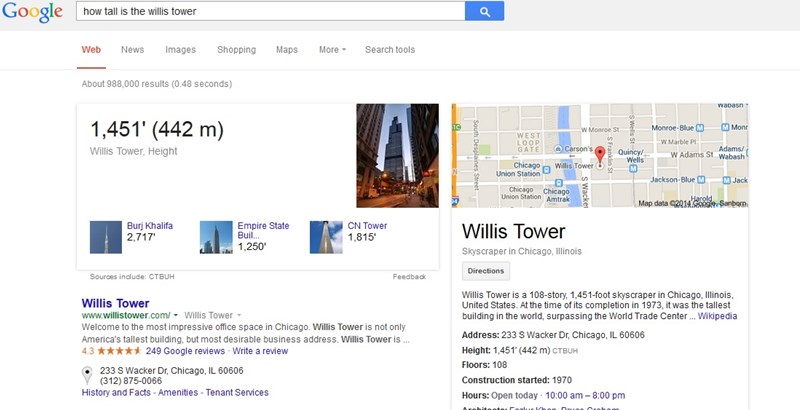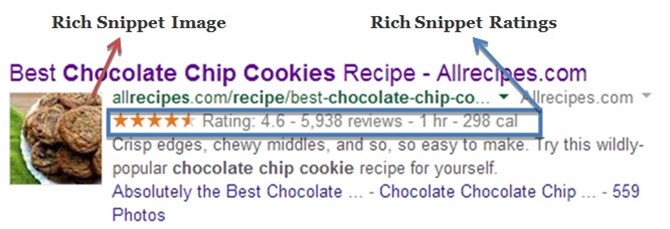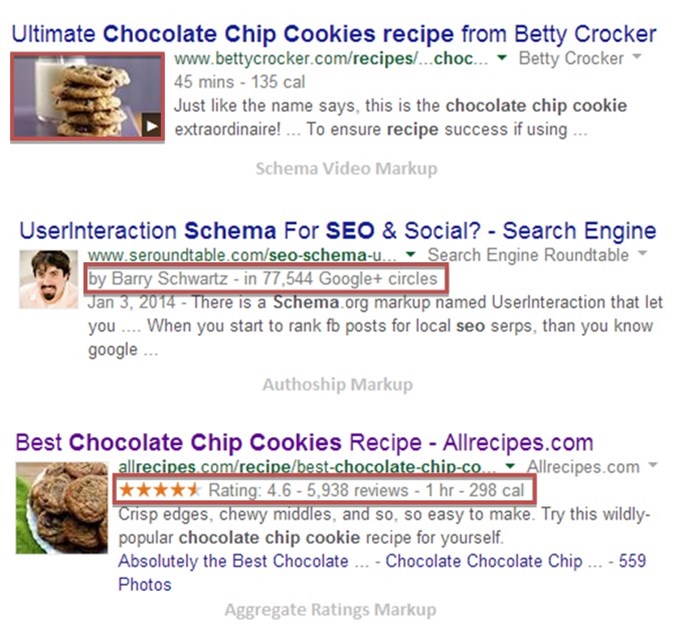How Your Business Can Thrive in the Era of Semantic Search
Search engines are progressively changing the landscape in which they interpret and serve users content. We are in the midst of a prominent shift away from the typical search algorithms that looked and served web pages based on keywords that were relative to a user’s search query. This is evident in a recent chain of events including the Google Hummingbird algorithm update that went live in August of 2013, which was designed to give Google the ability to be more “answer based” and provide users content in a more efficient and informative way.
Here is an easy example of what I mean:

As search engines shift to the new era of search - the semantic era - it is important to understand some key elements of schema markup and how it can be used and interpreted by search engines. Let's take a look at some of the areas that surround the use and implementation of schema.org markup to get a better understanding as to what schema is and what it can do for your SEO.
History of Schema.org Markup
Schema.org was officially launched by major search engines - Google, Yahoo & Bing - in June of 2011 and was later followed by the Russian search engine Yandex in November of 2013. The overall goal with Schema.org is to allow search engines the support and understanding of common entities (person, place or thing) for specific structured data elements used on various pages across a site. Google defines schema.org as:
"A collaboration by Google, Microsoft and Yahoo to improve the web by creating a structured data markup schema supported by major search engines."
Currently, all the major search engines recognize schema.org markup. However, its use is often overlooked by Webmasters simply because they often don't identify the proper use case and how to implement it effectively.
Why Use Schema.org?
It has been stated by Google that the proper use of schema.org markup gives search engines the ability to better comprehend and define the content used across webpages based on this structured markup. This is particularly important if you are trying to provide users specific types of content. By properly marking the content you wish your users to consume it is more likely that content will reach your target audience via the search engines.
I am often asked how the use of this markup will correlate to an increase in clicks or views to the content. Structured markup is used in conjunction with HTML and when it is consumed by the search engines, the interpretation is rendered through to the search engines results pages as a ‘rich snippet.’ These snippets more often than not have proven to help increase CTR (click thru rates) to your pages. It is important to note that not all structured markup is going to provide a rich snippet result. Some schema is not intended to provide any benefit within SERPs but rather as a significant aid in helping search engines better interpret and serve the appropriate content to the appropriate user.
How It Works
Schema.org markup, also known as structured markup provides search engines specific sets of data that is classified and labeled. That label is called an ‘entity’. By connecting these entities Google and other search engines are better able to index your business content – and provide better results to different queries generated by users.
Below is an excellent example of a recipe page that has been marked up several times with structured markup. It helps this page not only rank well for ‘Chocolate Chip Cookies”, but also provides users with useful information through those key content markups.

As you can see these elements standout – but also provide users with information that could determine whether or not they want to click on that result – particularly the ratings.
What Elements Can You Markup?
Recently a study was conducted by Searchmetrics which shows that roughly 99% of current domains are not utilizing structured data markup. Additionally, the same study states:
"According to the data, Google shows results with Schema markup aka “rich snippets” for more than 36 percent of queries examined.”
This is very important and could and in some cases should be used as a competitive advantage for companies or clients looking to deploy SEO best practices.
When it comes to using rich snippets schema.org has made is easy to markup hundreds of different content elements. Everything from restaurants, music, and people to business organizations, videos and products can be marked up.
Below are some examples in which schema.org markup has been implemented and the rich snippet results were generated:

Final Thoughts
Using semantic markup can help businesses increase CTR, drive visitors and increase conversions. At Spectrum, we implement schema across all client sites, wherever applicable.
As search engines continue to expand on the markup they recognize it will be important that businesses and SEOs adapt to these changes and remain innovative. Not only does it provide search engines the markup necessary to better understand and index content, but it also creates a more engaging and trustworthy result within a SERP.
Finally, as alternative methods of searching across devices expands to include voice activated search it will be important that we continue to evolve our methods of providing search engines with the data they need through semantic markup.
For more information on how Spectrum utilizes structured markup in your online marketing strategy, contact your Account Manager today!








